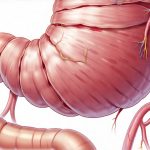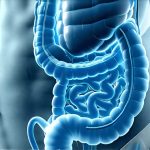The digestive system is often taken for granted until something goes wrong. We generally expect food to move through our bodies seamlessly, providing nourishment without incident. But what happens when that process becomes disrupted? Many people experience unsettling symptoms – bloating, gas, abdominal pain – and attribute them to a variety of causes, from dietary indiscretion to simple stress. Often overlooked is the possibility of Small Intestinal Bacterial Overgrowth (SIBO), a condition where an excessive amount of bacteria resides in the small intestine, leading to fermentation of undigested carbohydrates and subsequent digestive distress. Understanding sibo connection and recognizing its often-subtle symptoms can be the first step towards finding relief and restoring gut health.
It’s crucial to understand that digestive issues are incredibly common, making diagnosis challenging. Many conditions share overlapping symptoms, and what one person experiences as mild discomfort might be debilitating for another. Furthermore, SIBO doesn’t always present with dramatic, obvious signs; it can manifest in a surprisingly diverse range of ways, sometimes even mimicking other illnesses entirely. This article will explore the common digestive symptoms associated with SIBO, aiming to empower you to recognize potential warning signs and understand when seeking professional evaluation is necessary. We will also touch upon how these symptoms differ from typical digestive complaints and introduce some related considerations that can aid in identifying this often-misunderstood condition.
Understanding The Spectrum of Digestive Symptoms
SIBO’s impact on digestion stems from the bacterial overgrowth interfering with normal digestive processes. Normally, the small intestine should have a relatively low number of bacteria. This allows for efficient absorption of nutrients. In SIBO, the excess bacteria ferment carbohydrates – sugars, starches, and fibers – before they can be properly absorbed in the lower digestive tract. This fermentation process produces gases like hydrogen, methane, and carbon dioxide, leading to many of the characteristic symptoms. The type of gas produced can also influence symptom presentation; for example, methane dominance is often associated with constipation while hydrogen/sulfide dominance tends to correlate with diarrhea.
The resulting symptoms are wide-ranging because the small intestine plays a vital role in nutrient absorption and overall health. Beyond the gut itself, SIBO can contribute to systemic issues due to malabsorption of essential vitamins and minerals. This is why SIBO isn’t just a digestive issue; it’s a systemic one that impacts energy levels, immune function, and even mental wellbeing. It’s important to note that symptom severity doesn’t necessarily correlate with the level of bacterial overgrowth—some individuals may experience significant distress with relatively mild overgrowth while others remain largely asymptomatic.
The most frequently reported symptoms include bloating (often occurring within hours of eating), abdominal pain or cramping, excessive gas (burping and flatulence), and changes in bowel habits. These can range from diarrhea, constipation, or alternating between the two. Nausea is also common, as is a feeling of fullness after only small amounts of food. However, SIBO’s presentation extends beyond these typical gut symptoms, potentially manifesting in seemingly unrelated ways.
Beyond The Gut: Systemic Symptoms & Nutrient Deficiencies
SIBO often goes undiagnosed because its symptoms can mimic other conditions or are dismissed as “just part of life.” This is particularly true when systemic symptoms arise. Malabsorption caused by SIBO leads to deficiencies in vital nutrients like vitamin B12, iron, fat-soluble vitamins (A, D, E, K), and calcium. These deficiencies contribute to a range of non-digestive symptoms that can be easily overlooked as being unrelated to the gut.
Here’s how nutrient deficiencies linked to SIBO can present:
– Fatigue and weakness due to B12 or iron deficiency.
– Bone pain and increased risk of fractures from vitamin D malabsorption.
– Skin problems like eczema or dry skin related to essential fatty acid deficiencies.
– Neurological symptoms such as numbness, tingling, or cognitive difficulties due to B12 depletion.
Furthermore, the chronic inflammation associated with SIBO can impact various body systems. Some individuals may experience joint pain, headaches, brain fog (difficulty concentrating and thinking clearly), or even mood disturbances like anxiety or depression. Because these symptoms are so nonspecific, it’s easy for them to be attributed to other causes, delaying proper diagnosis and treatment of the underlying SIBO. Recognizing this potential connection between gut health and overall wellbeing is key to proactive health management. If you experience unexplained fatigue, consider anxiety attacks.
The Role Of Food Intolerances & Histamine
A fascinating aspect of SIBO is its strong correlation with food intolerances. As bacterial overgrowth disrupts normal digestion, it can lead to incomplete breakdown of carbohydrates (like lactose or fructose) resulting in symptoms similar to a true allergy but stemming from digestive insufficiency rather than an immune response. This means individuals may experience bloating, gas, and diarrhea after consuming certain foods—not because they’re allergic, but because their gut isn’t equipped to properly process them due to the bacterial imbalance.
Another important factor is histamine intolerance. SIBO can increase intestinal permeability (“leaky gut”), allowing more histamine – a naturally occurring compound involved in immune response and neurotransmission – to enter the bloodstream. This excess histamine can trigger symptoms like hives, flushing, headaches, nasal congestion, anxiety, and even digestive upset. The interplay between SIBO, leaky gut, and histamine intolerance creates a complex picture that makes diagnosis and treatment more challenging but also highlights the importance of holistic assessment. Addressing these interconnected issues is essential for long-term relief. You might find it helpful to look into anti-inflammatory diet options if you suspect food intolerances are playing a role.
Diagnostic Approaches & Seeking Professional Help
While recognizing symptoms is a vital first step, self-diagnosis isn’t advisable. Several diagnostic tests can help determine if SIBO is present. The gold standard test is typically a breath test, which measures the levels of hydrogen and methane gases exhaled after consuming a specific carbohydrate solution (lactulose or glucose). Elevated gas production indicates bacterial fermentation in the small intestine. However, breath tests are not foolproof and can sometimes produce false positives or negatives.
Other diagnostic tools may include:
1. Detailed medical history and symptom assessment by a qualified healthcare professional.
2. Stool testing to rule out other causes of digestive issues like parasites or infections.
3. Blood tests to assess nutrient deficiencies and markers of inflammation.
If you suspect you have SIBO, it’s crucial to consult with a doctor – preferably one specializing in functional medicine or gastroenterology – who understands the nuances of this condition. They can accurately diagnose your symptoms, determine the underlying cause of the overgrowth, and develop an individualized treatment plan that addresses both the bacterial imbalance and any associated nutrient deficiencies or systemic issues. Treatment usually involves dietary modifications (like a low-FODMAP diet), herbal antimicrobials, prokinetics to improve gut motility, and potentially addressing underlying factors contributing to the SIBO. Consider steamed foods for easier digestion during diagnosis.
It’s important to remember that managing SIBO is often an iterative process, requiring ongoing assessment and adjustments to treatment as needed. A collaborative approach between you and your healthcare provider is essential for achieving long-term digestive health and wellbeing. If you are struggling with seasonal changes, consider seasonal treats. Additionally, if inactivity impacts your digestion, learn inactivity issues. Lastly, remember to check if nausea is gut related before assuming it’s digestive in nature.


















